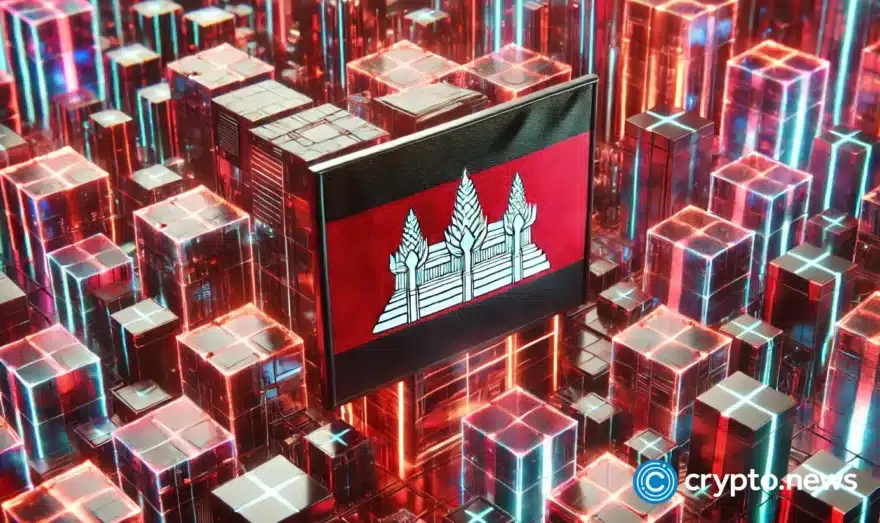Smart Contracts Basics

Have you ever wondered why people are buzzing about smart contracts? Imagine your agreements being coded, automatically enforced, and executed without mistakes or delays. Traditional contracts force you to deal with intermediaries, lawyers, and endless paperwork, which costs time and money and leaves room for human error. Smart contracts flip the script. Stored on blockchain networks, they execute automatically when conditions are met, making transactions secure, transparent, and efficient. Picture this: no more waiting for paperwork or paying high fees to middlemen. Automation ensures everything is error-free and fraud-proof. Think of handling your agreements as seamlessly as sending an email—that’s the game-changing promise of smart contracts. Ready to see how they can simplify your life? Keep reading for more insights on this groundbreaking technology.Traditional contracts require intermediaries, lawyers, and lots of paperwork. These layers add costs, slow down processes, and can be prone to human error or manipulation.Imagine a digital “if-then” statement that executes automatically when conditions are met. Smart contracts are stored on blockchain networks, making them secure, transparent, and efficient.Smart contracts can save time, reduce costs, and minimize risks. They’re not just for tech geeks—they could become a key part of everyday business transactions.Here are some real-world benefits to think about:Imagine a world where you can handle your business agreements as seamlessly as sending an email. That’s the promise of smart contracts. Why not dig deeper and see how these smart agreements actually work? Stay tuned for a simpler breakdown of smart contracts in the next section!Let’s break down smart contracts into simple terms so anyone can get it.Think of a smart contract as a digital agreement written in code that automatically executes when certain conditions are met. It’s like a vending machine for contracts—insert a coin, select your snack, and the machine dispenses it without any human intervention.So, what makes up a smart contract? It primarily has these core components:Smart contracts run on blockchain networks like Ethereum. When the predefined terms and conditions coded into the contract are met, the contract self-executes. This eliminates the need for intermediaries and ensures that all parties stick to the agreed terms.“Imagine removing the middleman from every contractual agreement. The automation and security provided by smart contracts can literally change the way we transact.”For example, picture a scenario where you rent an apartment. Traditionally, you’d need a landlord, a tenant, a bank, and probably a lawyer. A smart contract could automate this: if the tenant pays the rent (condition met), the smart contract grants access to the apartment. It’s that simple—and efficient!But how exactly does this magic happen? How do these digital agreements get created and operate seamlessly? To find out, let’s explore the intricate workflow and the technology that powers smart contracts. Ready to uncover the details?Smart contracts are transforming the way we think about agreements. But how do they actually function? Let’s break it down step-by-step and look at the technology behind them.Imagine you want to create a smart contract to ensure a payment is made only when certain conditions are met. Here’s the workflow:The magic happens thanks to blockchain technology and specific programming languages. Here’s a closer look:The beauty of smart contracts lies in their ability to self-execute when conditions are met. Let’s break this down:For instance, imagine a freelance writer’s agreement where the client pays only when the task is completed. The smart contract would hold the funds in escrow and automatically release them upon submission of said task. No more chasing payments!Curious where smart contracts are already making waves in the real world? Stay tuned!Imagine a world where transactions are made without delays, agreements are honored without human error, and middlemen are obsolete. Sounds like a dream? Well, smart contracts are making this a reality in various sectors. Let’s explore some real-world applications where smart contracts are truly shining.Smart contracts are game-changers in the financial world. They can automate payments, loans, and even insurance claims. Let’s take an example:A report by Cointelegraph found that automating insurance claims with smart contracts can reduce processing costs by up to 70%.Think of the global supply chain and all its complexities. Smart contracts can streamline this by offering real-time tracking and verification of goods, ensuring authenticity, and reducing fraud.According to Forbes, blockchain technology, including smart contracts, will save the supply chain industry billions by 2025.The buying and selling of property often involve stacks of paperwork and numerous intermediaries. Smart contracts can simplify this process, making it faster and cheaper.“The power of smart contracts lies in their ability to enforce themselves without requiring trust in a third-party” – Vitalik Buterin, founder of Ethereum.From finance to property, smart contracts are eliminating inefficiencies and ushering in a new age of automation and trust. But here’s the big question: how can you create your own smart contract? Stay tuned, as we’re gearing up to show you exactly how!Ever thought of making your own smart contract? You might think it’s a complex feat, but it’s more achievable than you think. Buckle up, because you’re about to step into the fascinating world of creating your very own smart contract. Let’s break it down into clear, actionable steps.Before you start, be crystal clear about what you want the smart contract to accomplish. Is it to facilitate automatic payments, manage a leasing agreement, or maybe handle supply chain operations? Your goal will drive the entire process, so make sure you have a detailed plan.When it comes to writing smart contracts, Solidity is the go-to language. It runs on the Ethereum blockchain and is the most popular choice. You can find the thorough documentation on the Solidity official site. Familiarize yourself with the basics and get comfortable with its syntax.This is where you bring your smart contract to life. Write your code based on your defined objectives. But don’t stop there—testing is crucial. Bugs and errors can be costly. Use test networks like Rinkeby or Ropsten in the Ethereum ecosystem to test your contract without risking real assets.Your smart contract is now ready for the real world. Deploy it on platforms like Ethereum to make it live. This step involves paying a gas fee, so ensure that you’ve allocated some Ether (ETH) to cover this cost.If you’re thinking, “This sounds tough,” remember this quote by Steve Jobs:“The people who are crazy enough to think they can change the world are the ones who do.”You don’t need to be a tech genius to get started—all you need is the willingness to learn and try.Curious about what hurdles you might face after deployment or how you can enhance and secure your smart contract? Good news—I’ll tackle the Challenges and Limitations of Smart Contracts in the next section. Ever wonder if a slight bug could sink your entire operation? Stay tuned to find out more!Smart contracts are amazing, but they’re not perfect. Let’s explore some of the hurdles you might face when dealing with these digital agreements.One big challenge is scalability. As blockchain networks grow, they can get bogged down. Imagine trying to get your contract through during a busy time—it can be slow and costly. When too many transactions flood the network, it can cause delays and hike up transaction fees. For businesses relying on quick and cheap transactions, this is a significant downside.Security is another major concern. While smart contracts are designed to be secure, they’re only as safe as the code they’re written in. A bug or vulnerability in the code can lead to serious issues, including financial losses. Remember the infamous DAO hack on Ethereum? Over $60 million worth of Ether was stolen due to a vulnerability in a smart contract code. It’s a stern reminder that extra caution and rigorous testing are vital.Lastly, let’s talk about the legal landscape. Laws are still catching up with the technology, and this lag can lead to uncertainties. For example, what happens if something goes wrong with a smart contract? Traditional contracts have clear legal paths for dispute resolution, but for smart contracts, the answers aren’t always clear cut. Navigating these blurry lines can be tricky and sometimes risky.To learn more about smart contracts, check out these great resources:While these challenges exist, the potential benefits of smart contracts are too significant to ignore. Ready to see what the future holds for this groundbreaking technology? Stay tuned for the next part where we explore the emerging trends and advancements in this fascinating field!What’s the next big thing for smart contracts? Let’s explore the emerging trends, advancements in technology, and what it all means for the future.Smart contracts are beginning to integrate with other cutting-edge technologies. One fascinating trend is their combination with the Internet of Things (IoT). Imagine appliances that can autonomously order and pay for supplies when they run low, all powered by smart contracts. Another exciting area is decentralized finance (DeFi). Smart contracts are already transforming the financial landscape by enabling automated, transparent lending and borrowing services without the need for traditional banks.Look at how DeFi Pulse showcases the extent of smart contract integration in the current DeFi ecosystem. It’s astounding to see smart contracts governing billions of dollars worth of assets, making finance more accessible and transparent.As blockchain technology and programming languages evolve, smart contracts will become even more robust and versatile. Languages like Solidity are continuously being improved to reduce vulnerabilities, making them safer and more reliable. New blockchain platforms are emerging too, such as Polkadot and Cardano, which aim to offer increased scalability and interoperability.Additionally, there’s ongoing research into layer 2 solutions, like Ethereum’s Rollups, which could significantly reduce transaction fees and speed up the execution of smart contracts. These advancements are crucial for the broader adoption of smart contracts in various industries.The potential for smart contracts is vast. Resources like Risein’s Beginner’s Guide, Solidity documentation, and Stellar’s Learn Section are excellent starting points for anyone looking to understand and implement smart contracts. The technology is still evolving, but the promise it holds for revolutionizing transactions and agreements is undeniable.Smart contracts are paving the way for more efficient and secure transactions. They represent the future of digital agreements, and understanding their basics is the first step towards leveraging this ground-breaking technology. Ready to see what smart contracts can do for you? Stay tuned to Cryptolinks.com for more insightful posts!I am an accomplished and enthusiastic business development professional who works in the crypto world from the roots of the blockchain and cryptocurrency economy environment.

Published on Other News Site



















